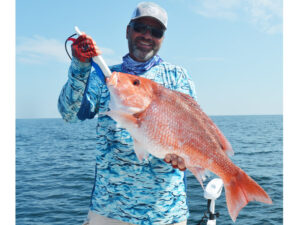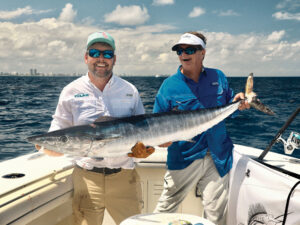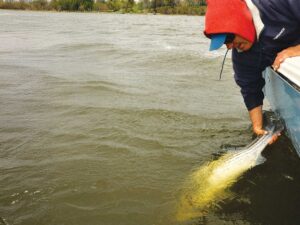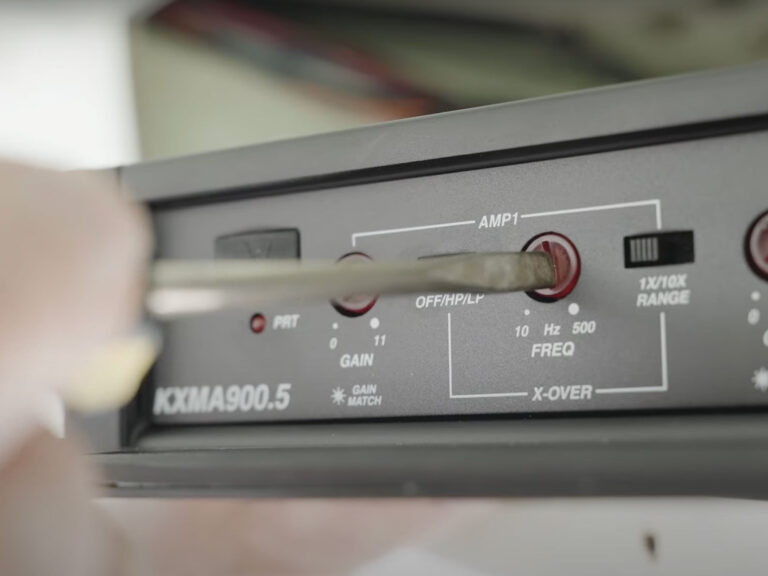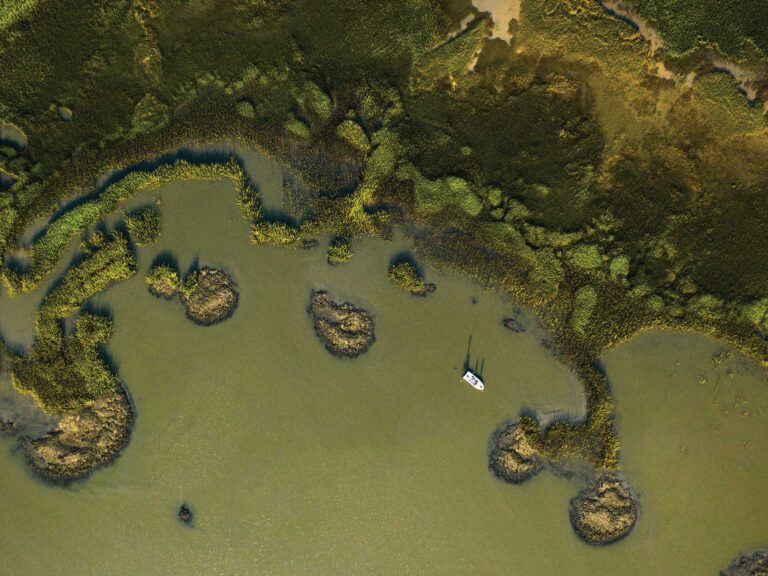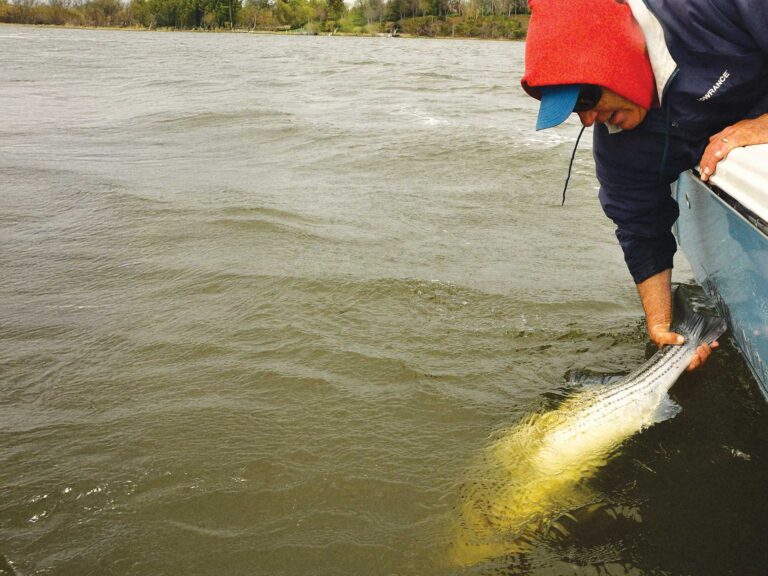Watching tuna pounce on flying fish while they ignore your meticulously rigged trolling baits frustrates even the most patient anglers. In desperation to get a strike, captains increase and even decrease trolling speeds as fast as baits are switched out. It becomes even more aggravating when typically aggressive dolphin follow suit.
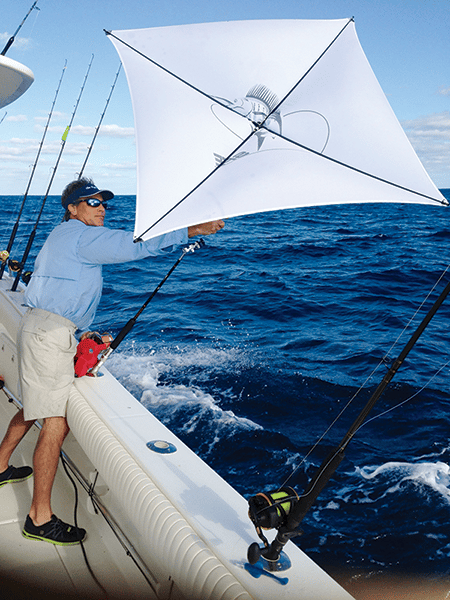
thumb kites
Chumming with live baits puts both species in a frenzy and makes catching them much easier. But what if you don’t have live bait? How can you catch selectively feeding game fish? Enter the fishing kite. With a long and hard-to-shake stereotype of being a tool for live-baiting sailfish off South Florida, some North Carolina offshore anglers figured out a long time ago that trolling non-live offerings from a kite consistently fools finicky tuna and dolphin. By exploiting the aggressive angle of the fishing line from the kite clip down to the bait, they’ve discovered that a trolled bait will continually launch itself from the water and re-enter anywhere between a few feet to 10 feet ahead of its exit point. This presentation accurately mimics yellowfin tuna or dolphin showering flying fish from the ocean where standard trolling cannot. Fine-tune bait size and hues to that of the forage fish in the area, and the fishing kite becomes a winning ticket.
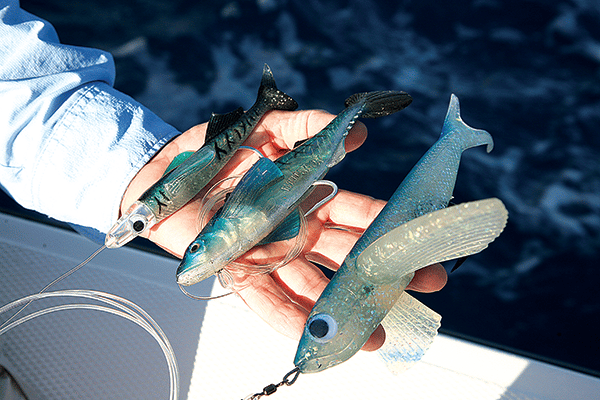
Air Out
Whereas live baits are used nearly exclusively under a kite while at anchor, drifting or slow trolling with lures and/or freshly rigged natural baits like flyingfish, mullet, mackerel and skirted ballyhoo are deployed as “skipping” offerings when pulled with an airborne assist.
A freshly rigged flying fish makes an ideal bait for this tactic. However, skipping a natural bait washes it out very quickly, hence the use of a skirt or a pure artificial. In the latter department, rubber flying fish in different sizes work quite well. An example is the Yummee Fly ‘N Fishes, which are available in 4-, 7- and 9-inch-long models. Similar-appearing offerings include Williamson’s Live-Tuna Catcher Hybrid and Live Ballyhoo Hybrid, along with its Live Series line of soft, winged lures that include mullet and mackerel. All of these styles of artificial seemingly last forever.
To rig one of these flyers for tuna, dolphin and even wahoo, use 4 feet of monofilament or fluorocarbon leader (100-pound-test for the smaller versions and dolphin, and 150-pound-test for the larger flyers and tunas). Tie a barrel swivel onto one end of the leader. Next, run the leader through the nose of the flyer and body cavity, and position the hook so it exits at the base of the tail, or very close to it (spacer beads might be required to position the hook). When trolling small flyers for school and medium dolphin and tuna, use a long-shank 7/0 or 8/0 hook; for pulling a big flyer on 50-pound-class tackle and for large tuna, opt for a 9/0 extra-strong long-shank hook. To thwart wahoo cutoffs, attach a short length of 270-pound-test, 7-by-7 cable to the eye of the hook and its opposite end to a barrel swivel, which should be positioned just in front of the bait’s nose (and then tie leader to this swivel); the cable will prevent cutoffs, while the swivel alleviates line twist.
Because the kite will be pulled up to 10 mph, and likely into some stiff breezes, add a 2- to 4-ounce egg sinker on the fishing line prior to attaching its snap swivel to the leader’s barrel swivel. This ballast keeps the lure down in the water, making it easy to fine-tune its position by dropping back or reeling it up. Note that the Williamson lures have weighted heads, eliminating the need for an additional sinker. Experienced anglers often pull two flyers from the kite, but initially opt for one until you get the hang of it.
Use a conventional 30- or 50-pound-class reel filled with 30- or 50-pound-test mono or braid (braid is best for minimum wind resistance), and add a ring guide onto the fishing line prior to adding the sinker and snap swivel. This ring attaches to the kite-release clip and provides a smoother, less-abrasive surface for the fishing line to ride on. If you wish, put a kite float on the line above the swivel to improve visibility.
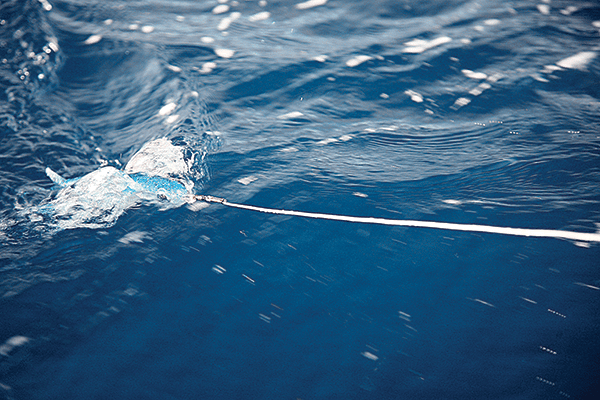
Launching Tricks
First and foremost, keep a clean and unobstructed cockpit. Deploy the outriggers to open up the cockpit area, and remove any center rigger. Aim the vessel into the wind, set its speed to around 5 mph or so, and launch the kite, making sure to stay clear of any bulkheads or console and the subsequent backdrafts that will impede the launch. Fly the kite out until its first or second release clip, based on the desired distance of the bait. Hold the ring guide on the fishing outfit, and free-spool the bait back 100 feet or so. Attach the ring guide to the kite-release clip and adjust the setting, making sure it’s firm enough to withstand the rigors of dragging a bait across the surface
of the ocean. Continue free-spooling the kite while “swimming” back the flying fish, occasionally stopping the fishing line to keep the bait underneath its clip. At the desired distance, engage the kite reel’s drag and set the outfit in a holder. Pick up the trolling pace, and dial in the position and actions of the bait. From there, work along any promising zones, such as weed lines, humps (i.e., blackfins in the Keys) and rips.
The kite will have a tendency to roam on the troll, with the slightest variations in course and wind direction shifting it over to the respective side — hence the reason for spreading the outriggers and removing the center rigger — to avoid contact with the kite line and possible tangles. Aboard large sport-fishing boats, you can run the kite line through an outrigger kite ring for maximum clearance.
For best control, troll into the wind, or at an angle to it; you’ll want the kite/bait to track behind the boat without interference or at an odd angle when a fish strikes. To keep control of the kite during a downwind pass, pick up enough speed to overcome any wind hailing from the same direction.
Try to keep the bait skipping along the surface. It often lags briefly beneath the surface until momentum catches up — which pulls it clear of the water — to splash back in. The action simulates the very sights and sounds of escaping forage.
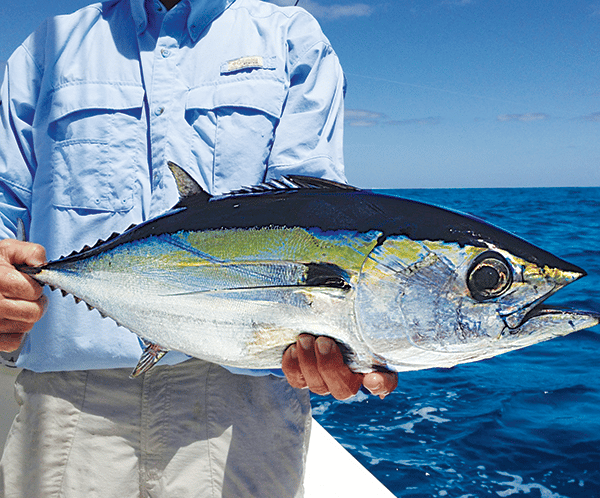
Strike Time
With either a circle or J-hook, the strike of a tuna, wahoo, billfish or dolphin opens the release clip. If the line remains in the pin, wind rapidly until it breaks away. At this stage, and like kite-fishing in general, quickly reel up the slack line while aiming the rod tip toward the fish. When tight to the fish, keep winding until line pulls from the reel.
To keep the kite in place while ensuring an effective hook-set, maintain trolling direction and speed for 30 seconds or so. A manageable fish can be played in while the kite remains in the air. Should a chase become necessary — whether backing down or quartering the fish from the bow — immediately retrieve the kite, and go after your prize.

